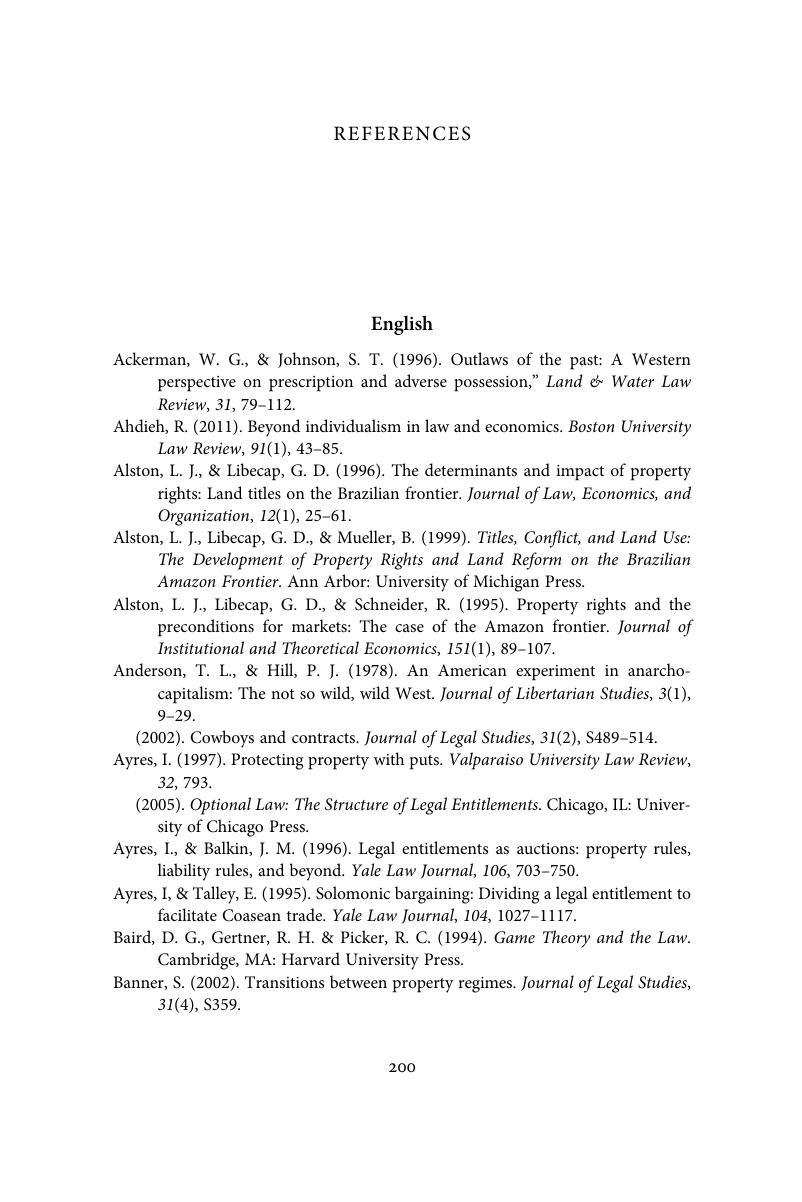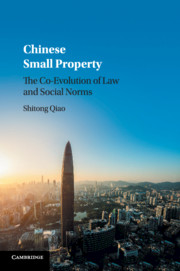Book contents
- Chinese Small Property
- Chinese Small Property
- Copyright page
- Contents
- Figures
- Tables
- Acknowledgments
- Introduction
- 1 The Evolution of Land Law in China
- 2 Planting Houses in Shenzhen
- 3 Small Property, Big Market
- 4 Small Property, Adverse Possession, and Optional Law
- 5 Small Property in Transition
- 6 All Quiet on the Judicial Front?
- Conclusion
- Book part
- References
- Index
- References
References
Published online by Cambridge University Press: 06 October 2017
- Chinese Small Property
- Chinese Small Property
- Copyright page
- Contents
- Figures
- Tables
- Acknowledgments
- Introduction
- 1 The Evolution of Land Law in China
- 2 Planting Houses in Shenzhen
- 3 Small Property, Big Market
- 4 Small Property, Adverse Possession, and Optional Law
- 5 Small Property in Transition
- 6 All Quiet on the Judicial Front?
- Conclusion
- Book part
- References
- Index
- References
Summary

- Type
- Chapter
- Information
- Chinese Small PropertyThe Co-Evolution of Law and Social Norms, pp. 195 - 199Publisher: Cambridge University PressPrint publication year: 2017



